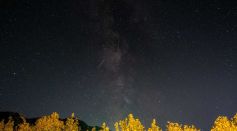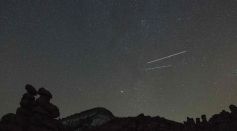Tags: Shooting stars

Geminid Meteor Shower 2023: Dazzling Celestial Spectacle Unfolds This Week, Showcasing 120 Shooting Stars Per Hour During Its Peak
Swift Leonid Meteor Shower Graces the Night Sky, Peaking on Saturday with Bright Fireballs and Dark Crescent Moon Enhancing Visibility

Halley's Comet Brings Orionid Meteor Shower This Weekend: Here's How To Watch This Stargazing Marvel

Perseids Meteor Shower 2023 Has Started; Here's When and Where You Can Watch It

Eta Aquarid Meteor Shower May 2023: How, When, and Where Can You Watch It?

2022 Orionid Meteor Shower Will Peak During the Predawn Hours on Friday: Here’s How to Watch This Cosmic Spectacle

How Often Do Shooting Stars Appear? Experts Say Meteor Showers Are Common Than Most People Thought
Most Popular

Largest Known Volcanic Aquifer Discovered Beneath Oregon's Cascades

New 'Supergiant' Sea Bug Found in South China Sea, Named After Darth Vader

Mediterranean Sea Was Refilled by a Catastrophic Flood Millions of Years Ago

Mysterious Cosmic Waves That Sound Like Birds Detected in Unexpected Space Region





